Mopungchuket
There are a few villages left, still. One is Mopungchuket, a village like all others, except that it has the name to be somewhat of a tourist attraction. Not that there are any tourists at all, no, no, but the village has a museum! With a ticket booth. Not that there is anybody to collect the entry fee, but we’ll deal with that on the way back. The museum consists of a traditional house, entirely made of natural materials. Which, we are told, is not just for tourists, but more for the youth of the village, to connect with their own history, their own culture. The house is very nicely done, with a traditional fire place, a range of baskets and other tools that may, or may not be in use anymore, these days. And whenever the house deteriorates, the villagers rebuilt it again, apparently every five or six years.
Likewise, there is – part of the museum – a small park, with a pond and a suspension bridge, that leads to a sculpture park. The six more than life size sculptures here tell several of the traditional stories, including the most famous one, of Jina and Etiben, the Ao version of Romeo and Julliet, who eloped – to Longkhum, the first village we visited -to get married against the will of their respective clans. Other sculptures tell other stories; the point is that once again it is nicely done, and it shows the pride the Ao, and the Naga people in general, have for their cultural heritage.

including a log drum allegedly dragged to here in 1880 by the Mongsen khel, or clan – unfortunately behind a grill

this is the local prison, where village justices can confine minor offenders, for a day, or so – we saw something similar in the
A random woman, old but still active with running her household, calls us in for tea – there is no declining, that’s not done. So we accept her invitation, and she immediately bullies her husband to the stove. Through our guide we manage some communication, whilst drinking our milk tea, before we take our leave, and wander on, further through the village.
Impur
Nearby is the small town of Impur, which has the oldest church in Nagaland, established in 1896, following the establishment of the first mission post two years earlier. It is a Baptist church, like the majority of churches in the Ao region; still today, the Baptist headquarters in Nagaland is based here.
We take the long way back, avoiding the National Highway, which means another nature delight, through green jungle vegetation, lots of banana trees, and the occasional expansive view over the valleys below – mostly obscured, though, by the trees, and by the continuing haze. New terraces are being created, by burning the trees, and parts of the slopes are black, and almost bare.
Longkong
Perhaps the nicest village visit is that to Longkong. This is too far away, and in the wrong direction, to be visited by tourists, but our guide has a relative there. Village visits don’t come more authentic that this one. As soon as we park the car, an older man, working on his new veranda – a total stranger, as far as I can gather -, invites us in. For a piece of papaya, which he got from his own papaya tree just this morning. He then proceeds to take a walking cane, made by himself, and hand it to me, as a present. He makes these himself, you see. And another large basket – how are we ever going to carry that home – is also a present, for my travel companion. And did we like the papaya? OK, take another one, for tomorrow. Absolutely uncalled for, of course, and we are pretty embarrassed, as we have nothing to give in return. But we are assured that it is all right, this is just how the people are.

individual houses invaribla from mostly corrugated iron, except the stove below the chimney, which is made of bricks

the mural that reminds the villagers about the origin of the village, which name means ‘growing stone’
Every village has its story, and that of Longkong – which means growing stone – is that the villagers found a stone that they thought got bigger and bigger every day. So they collected it and placed it is the village, where it now towers over the streets. Luckily, it doesn’t grow anymore. A mural, near the church, reminds the villagers of this story.
A little further, next to another, nice decorated morung, is the house of the relative’s mother, a 93 year old woman who is almost deaf and almost blind. But she is, if possible, even more welcoming than all the others, and through our guide and his relative we manage to strike up a conversation – interrupted so once in a while by the old lady, who decides to pray for us, and sing.
Absolutely wonderful people. Absolutely wonderful experience.

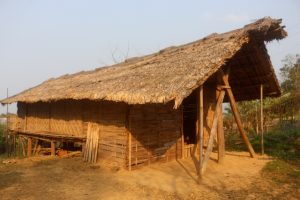

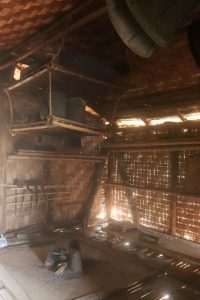




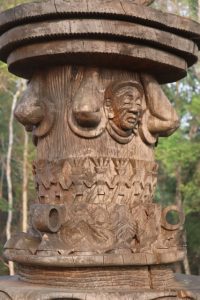
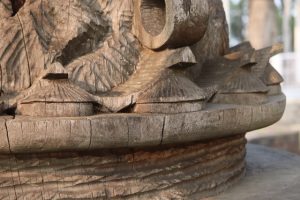
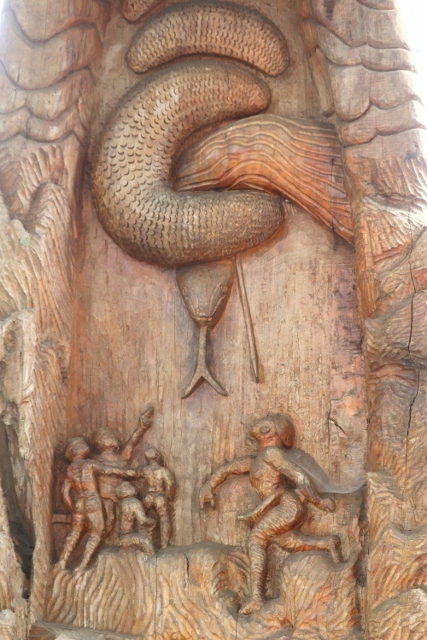










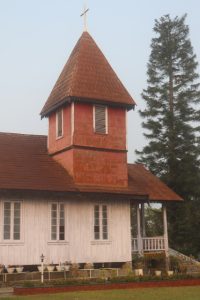

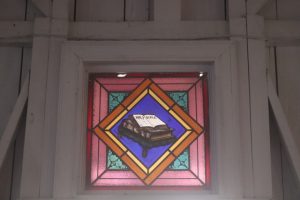


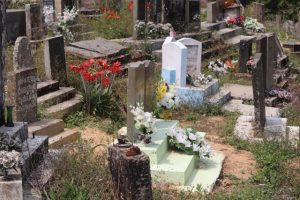




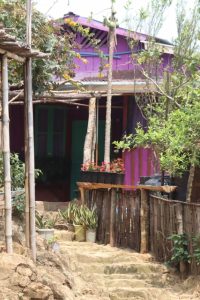

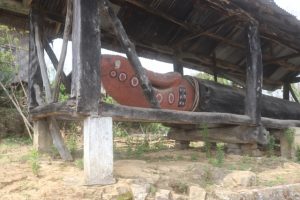
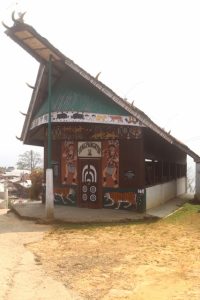




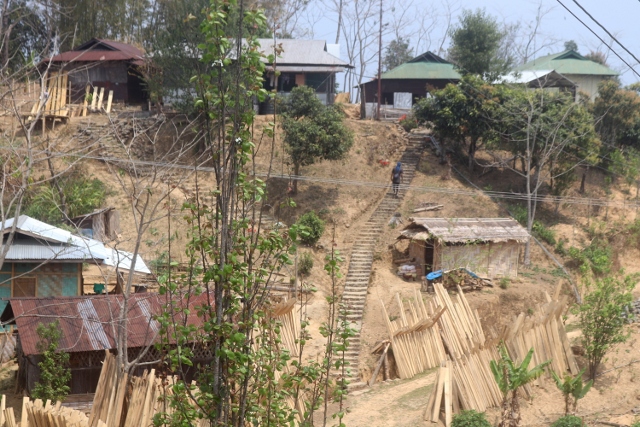

 RSS – Posts
RSS – Posts







